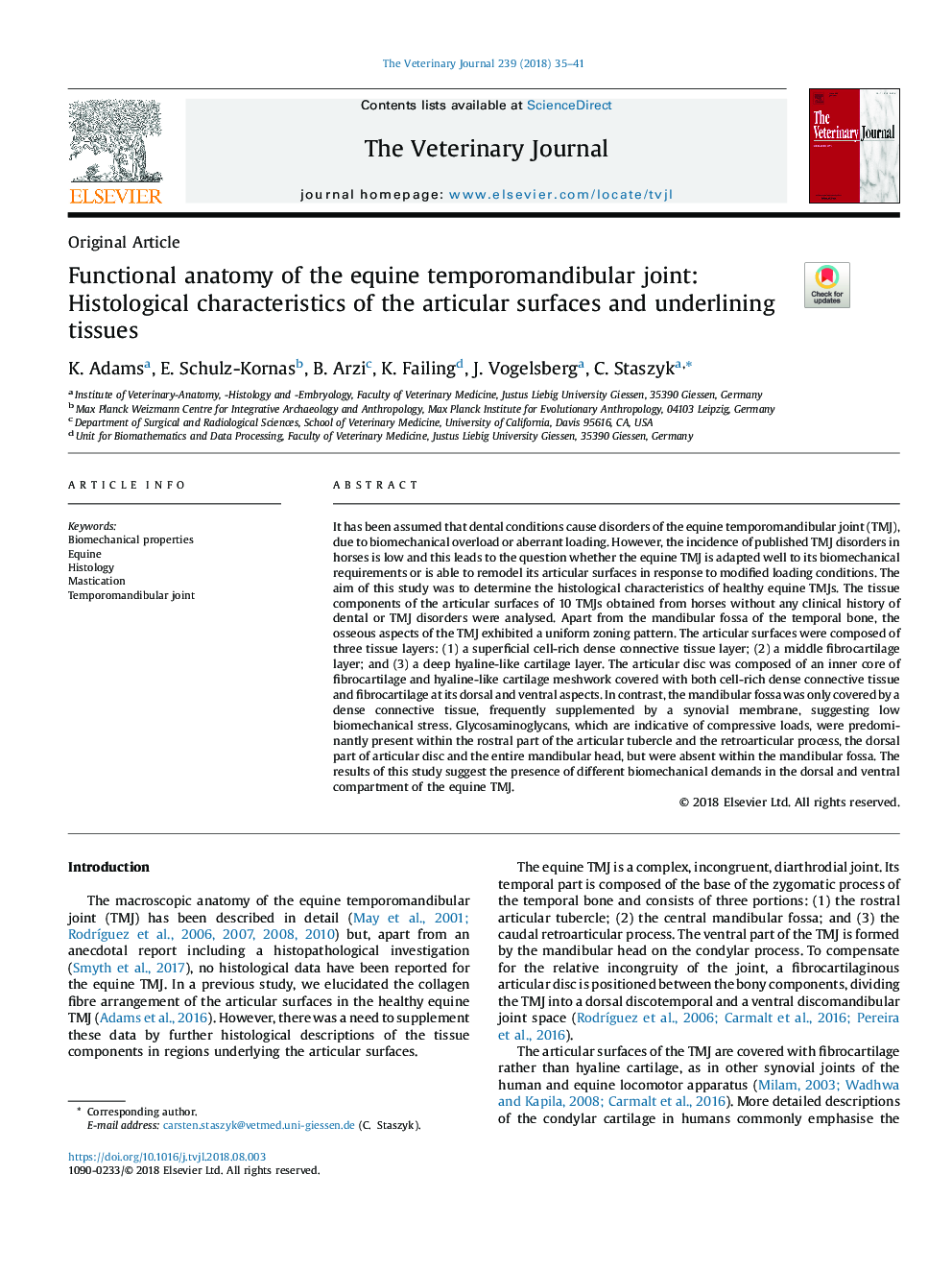| کد مقاله | کد نشریه | سال انتشار | مقاله انگلیسی | نسخه تمام متن |
|---|---|---|---|---|
| 8504820 | 1555204 | 2018 | 7 صفحه PDF | دانلود رایگان |
عنوان انگلیسی مقاله ISI
Functional anatomy of the equine temporomandibular joint: Histological characteristics of the articular surfaces and underlining tissues
ترجمه فارسی عنوان
آناتومی کارکردی مفصل مفصل:
دانلود مقاله + سفارش ترجمه
دانلود مقاله ISI انگلیسی
رایگان برای ایرانیان
کلمات کلیدی
خواص بیومکانیک، اسب ها، بافت شناسی، چسباندن، مفصل مفصل مفصلی،
موضوعات مرتبط
علوم زیستی و بیوفناوری
علوم کشاورزی و بیولوژیک
علوم دامی و جانورشناسی
چکیده انگلیسی
It has been assumed that dental conditions cause disorders of the equine temporomandibular joint (TMJ), due to biomechanical overload or aberrant loading. However, the incidence of published TMJ disorders in horses is low and this leads to the question whether the equine TMJ is adapted well to its biomechanical requirements or is able to remodel its articular surfaces in response to modified loading conditions. The aim of this study was to determine the histological characteristics of healthy equine TMJs. The tissue components of the articular surfaces of 10 TMJs obtained from horses without any clinical history of dental or TMJ disorders were analysed. Apart from the mandibular fossa of the temporal bone, the osseous aspects of the TMJ exhibited a uniform zoning pattern. The articular surfaces were composed of three tissue layers: (1) a superficial cell-rich dense connective tissue layer; (2) a middle fibrocartilage layer; and (3) a deep hyaline-like cartilage layer. The articular disc was composed of an inner core of fibrocartilage and hyaline-like cartilage meshwork covered with both cell-rich dense connective tissue and fibrocartilage at its dorsal and ventral aspects. In contrast, the mandibular fossa was only covered by a dense connective tissue, frequently supplemented by a synovial membrane, suggesting low biomechanical stress. Glycosaminoglycans, which are indicative of compressive loads, were predominantly present within the rostral part of the articular tubercle and the retroarticular process, the dorsal part of articular disc and the entire mandibular head, but were absent within the mandibular fossa. The results of this study suggest the presence of different biomechanical demands in the dorsal and ventral compartment of the equine TMJ.
ناشر
Database: Elsevier - ScienceDirect (ساینس دایرکت)
Journal: The Veterinary Journal - Volume 239, September 2018, Pages 35-41
Journal: The Veterinary Journal - Volume 239, September 2018, Pages 35-41
نویسندگان
K. Adams, E. Schulz-Kornas, B. Arzi, K. Failing, J. Vogelsberg, C. Staszyk,
